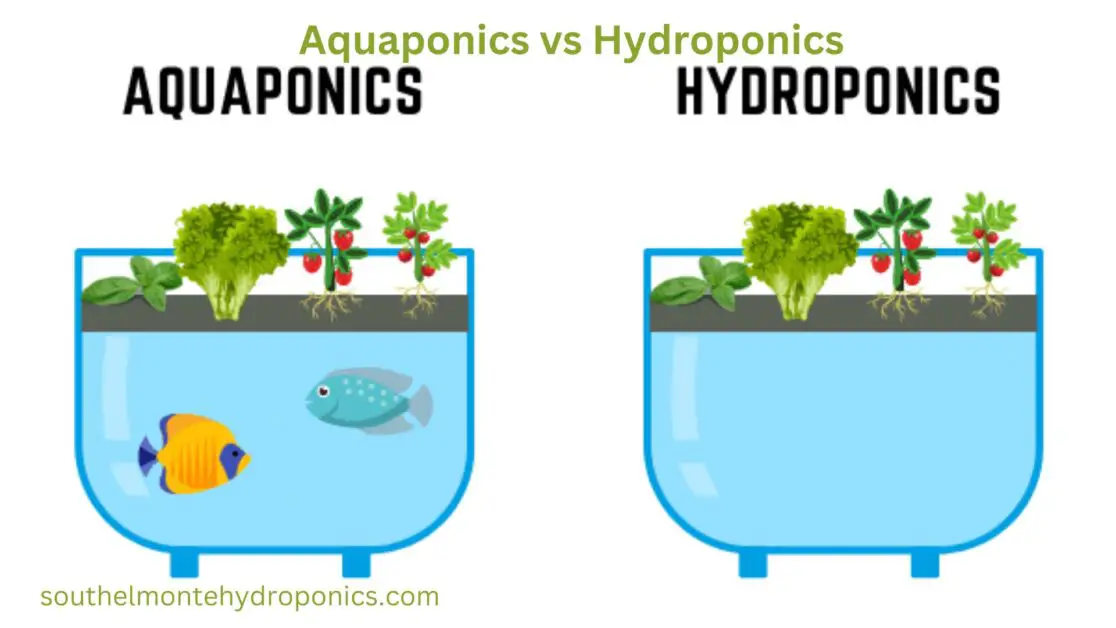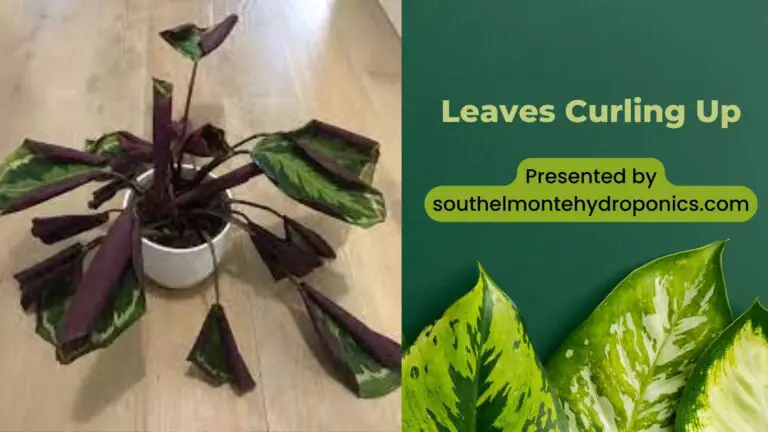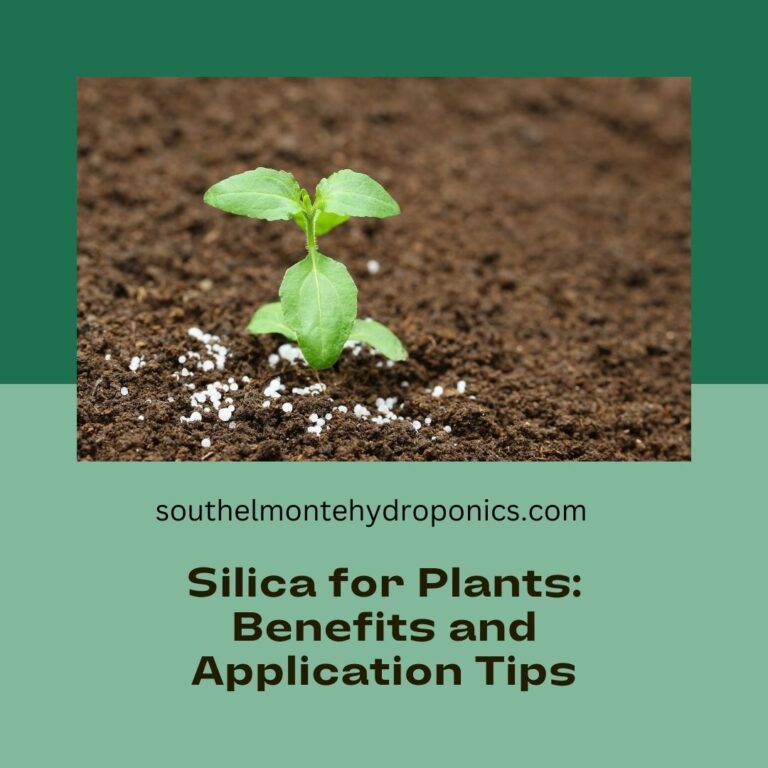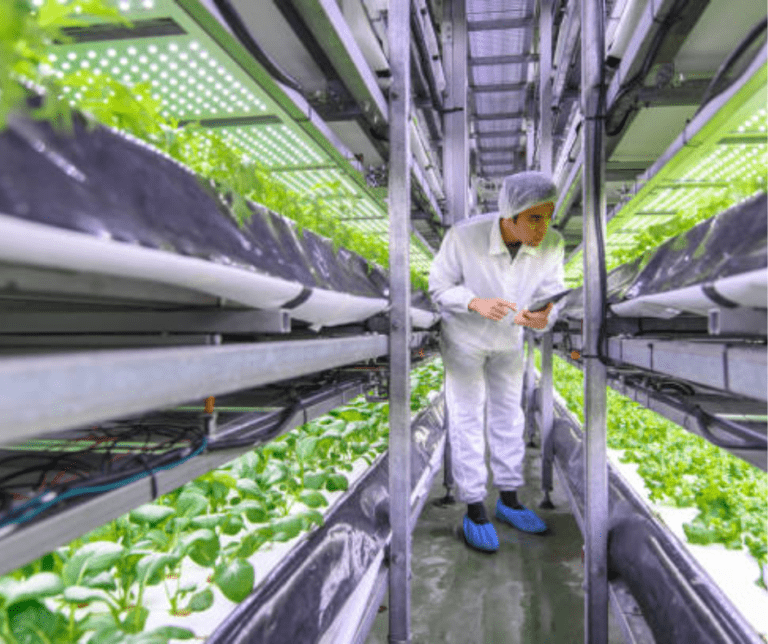Aquaponics vs Hydroponics: The Best Benefits, Challenges, and Costs of Each System
Table of Contents
Understanding Aquaponics vs Hydroponics: A Comparative Analysis
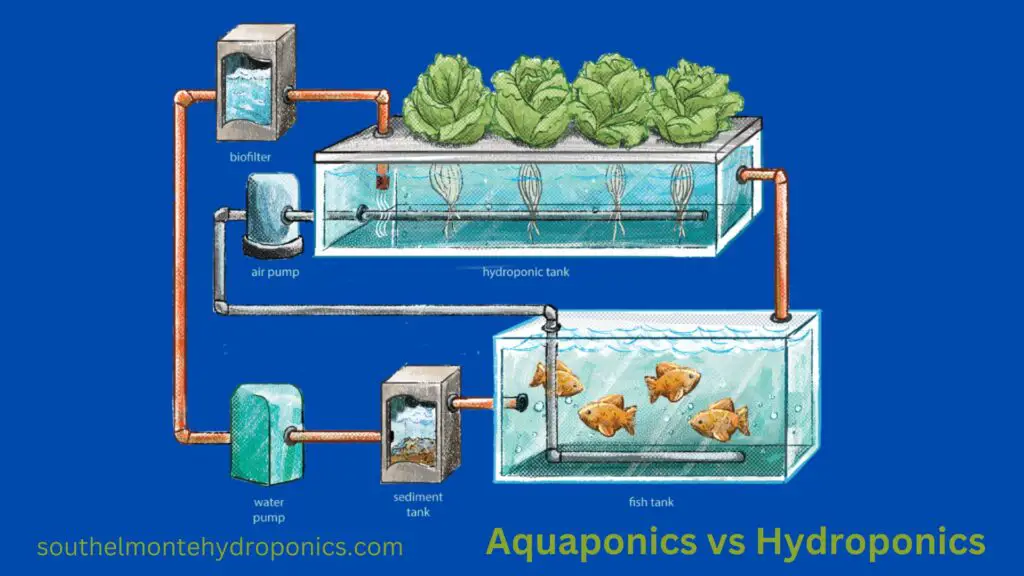
Aquaponics vs Hydroponics are two modern agricultural systems that have gained significant attention in recent years. Both systems involve growing plants without the use of soil, utilizing water as the primary medium for nutrient delivery. While they share some similarities, there are distinct differences that set them apart.
In Aquaponics vs Hydroponics, a symbiotic relationship is established between plants and fish. The nutrient-rich water from the fish tanks is pumped into the plant beds, providing essential minerals and organic matter for plant growth. The plants, in turn, filter the water, removing harmful substances, and returning the clean water back to the fish tanks. This closed-loop system creates an ideal environment for both plants and fish, ensuring their mutual benefit and overall sustainability.
On the other hand, hydroponics is a method of plant cultivation that relies solely on nutrient-rich water solutions to support plant growth. The water is delivered directly to the plant roots, providing them with the necessary minerals and oxygen. Without the need for soil, hydroponics offers precise control over nutrient levels, pH, and water content, allowing for optimal growing conditions. This system is particularly popular in urban settings where space is limited and soil quality may be poor.
While both aquaponics vs Hydroponics offer unique advantages, careful consideration is necessary when choosing the right system for specific gardening needs. Factors such as resource efficiency, fertilizer usage, water consumption, pest control, and cost analysis must be thoroughly evaluated to determine the most suitable method. By understanding the comparative analysis of aquaponics and hydroponics, gardening enthusiasts can make informed decisions that align with their goals of sustainable and productive plant cultivation.
Environmental Impact: Evaluating Sustainability and Resource Efficiency
Aquaponics vs hydroponics are unique systems that have gained popularity in recent years due to their potential for sustainable and efficient food production. When evaluating the environmental impact of these systems, sustainability and resource efficiency are key factors to consider.
Both aquaponics vs hydroponics have the advantage of reducing water consumption compared to traditional soil-based agriculture. In hydroponics, water is recirculated within the system, minimizing waste. Aquaponics goes a step further by incorporating fish farming, where the waste produced by fish serves as a nutrient source for plants, reducing the need for additional fertilizers. This closed-loop approach can significantly decrease water usage, making both systems environmentally friendly alternatives.
Furthermore, aquaponics vs hydroponics require less land compared to conventional farming methods. By utilizing vertical growing techniques and tightly controlled environments, these systems maximize space utilization and increase crop yields. This not only minimizes the amount of land needed for cultivation but also reduces the pressure on natural ecosystems.
In terms of resource efficiency, aquaponics vs Hydroponics outperform traditional agriculture in several ways. Both systems allow for precise control over nutrient delivery, ensuring that plants receive the optimal balance of nutrients. This targeted approach reduces the overall amount of fertilizers and pesticides required, consequently limiting the release of harmful chemicals into the environment.
Moreover, these systems can be operated year-round, regardless of climate or seasonal changes. This uninterrupted production capability reduces the need for long-distance transportation of produce and the associated carbon emissions. By growing food locally, aquaponics vs hydroponics contribute to the reduction of food miles, enhancing overall sustainability.
While aquaponics vs hydroponics offer significant environmental benefits, it is essential to consider the energy requirements of these systems. Artificial lighting and heating may be necessary in certain settings, increasing energy consumption. To ensure sustainability, renewable energy sources can be integrated into the design and operation of these systems, offsetting any environmental impact caused by energy use.
In conclusion, aquaponics vs hydroponics showcases promising potential regarding sustainability and resource efficiency. With their reduced water consumption, land utilization, and targeted nutrient management, these systems exemplify environmentally friendly alternatives to traditional agriculture. However, it is crucial to address energy consumption and explore renewable energy options to maximize their overall environmental benefits.
Nutrient Management: Exploring the Differences in Fertilizer Usage
Nutrient management is a crucial aspect of both aquaponics vs hydroponics systems, as it directly impacts the growth and development of plants. However, there are notable differences in the usage of fertilizers between these two systems. In hydroponics, fertilizers play a central role in providing plants with essential nutrients, as the growing medium is typically devoid of natural soils. In this system, a carefully balanced mixture of macro and micronutrients is added to the water solution, ensuring that plants receive the nutrients they require for optimal growth. The controlled environment of hydroponics allows for precise adjustment and supplementation of nutrients, leading to efficient nutrient uptake by plants and reduced fertilizer wastage.
On the other hand, aquaponics utilizes a symbiotic relationship between plants and fish. In this system, fish waste accumulates in the water, providing a natural source of nutrients for the plants. The breakdown of fish waste by beneficial bacteria releases nitrogen, phosphorus, and other essential elements that plants need. This process eliminates the need for conventional fertilizers, as the nutrient-rich water is cycled through the system and continuously feeds the plants. It is important to note, however, that supplementary fertilizers may be required in certain cases, especially if there are imbalances in nutrient availability or specific plant requirements.
The utilization of fertilizers in aquaponics and hydroponics systems differs primarily due to their distinct nutrient delivery mechanisms. While hydroponics relies on direct supplementation of nutrients into the water solution, aquaponics harnesses the natural decomposition of fish waste to create a closed-loop nutrient cycle. Understanding these differences allows gardening enthusiasts to make informed choices when deciding which system to employ, taking into consideration factors such as their specific plant preferences, resource availability, and sustainability goals. By optimizing nutrient management practices, both aquaponics and hydroponics systems can maximize plant growth and yield while minimizing the environmental impact.
Water Consumption: Comparing Water Usage and Conservation
Water consumption is a crucial factor to consider when comparing aquaponics and hydroponics systems. Both systems require water for the growth and development of plants, but they differ in terms of water usage and conservation practices.
In hydroponics, water is the sole medium through which plants receive nutrients. The water is recirculated within the system, reducing the overall water consumption compared to traditional soil-based agriculture. However, due to evaporation and loss during nutrient absorption, a significant amount of water is still required. Implementing water conservation strategies such as using water-efficient irrigation techniques, like drip irrigation, and implementing water recirculation and filtration systems can further reduce water consumption and promote sustainability.
On the other hand, aquaponics combines hydroponics with fish farming, creating a symbiotic relationship where the waste produced by fish serves as fertilizer for the plants. This system requires less water than traditional hydroponics, as the water is continuously cycled between the fish tank and the plants. Additionally, aquaponics systems can integrate natural filtration processes that further minimize water waste. The presence of fish in the system also contributes to a higher level of nutrient availability for plant growth, reducing the need for additional fertilizers. By combining fish farming and hydroponics, aquaponics offers a more sustainable and water-efficient approach to cultivation.
Pest and Disease Control: Assessing the Effectiveness of Each System
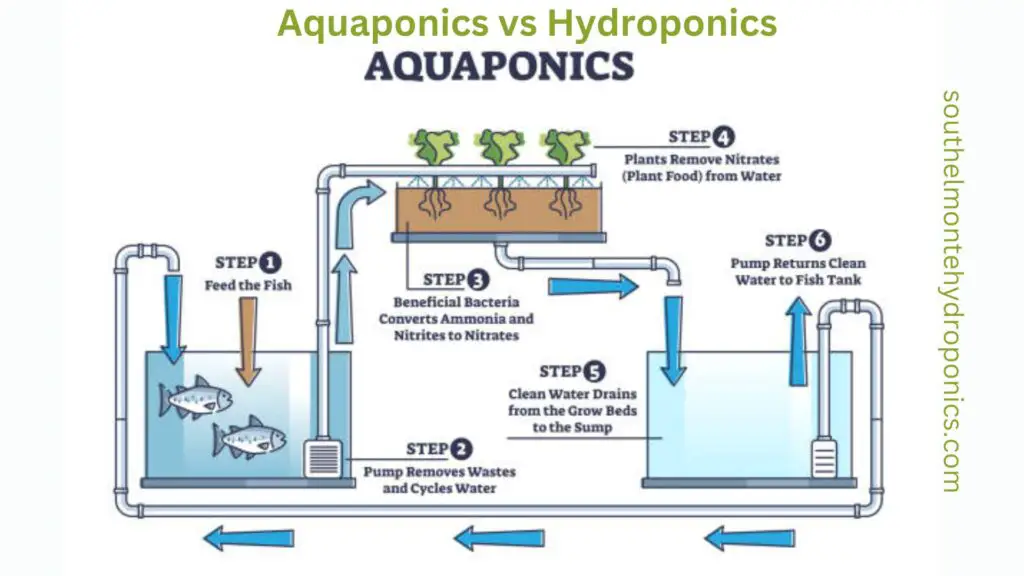
Aquaponics and hydroponics offer distinct advantages in pest and disease control, ensuring healthy and thriving plants. In hydroponics, the soilless cultivation method minimizes the risk of soil-borne pests and diseases, reducing the need for conventional pesticides. Instead, growers rely on integrated pest management (IPM) strategies, incorporating physical barriers, beneficial insects, and biological controls to maintain a pest-free environment. By carefully monitoring factors such as temperature, humidity, and nutrient levels, hydroponic systems create an optimal growing environment that discourages the development of pests and diseases. This proactive approach not only reduces chemical inputs but also minimizes the potential harm to beneficial organisms in the ecosystem.
Aquaponics takes a unique approach to pest and disease control by incorporating the natural balance of an aquaculture system. The presence of fish in aquaponics acts as a natural pest control mechanism, as they consume insect larvae and help to keep pest populations in check. Additionally, the natural microbial diversity in aquaponics systems can help suppress the growth of plant diseases. However, it’s important to note that like any other cultivation method, aquaponics is not immune to pest and disease outbreaks. To mitigate this, growers must be vigilant in maintaining proper system hygiene, regular water quality monitoring, and implementing IPM strategies when necessary. While aquaponics may offer some inherent advantages in pest control, it still requires careful management and attention to prevent potential issues.
Plant Growth and Yield: Analyzing Productivity and Crop Quality Aquaponics vs Hydroponics
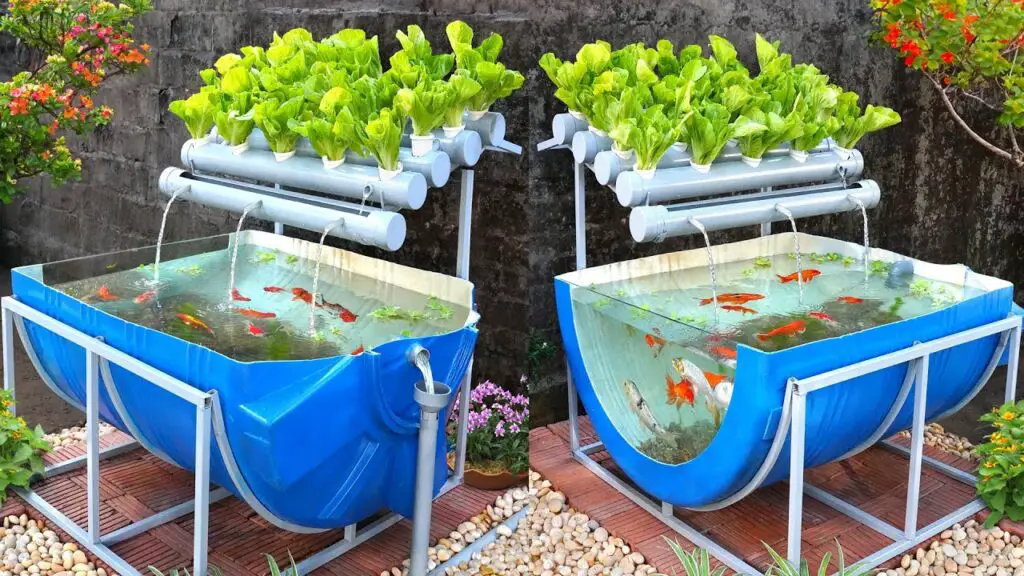
Plant growth and crop yield are crucial factors to consider when comparing aquaponics and hydroponics systems. Both systems offer controlled environments that optimize growth conditions, resulting in higher productivity and crop quality.
In hydroponics, plants are grown in a nutrient-rich solution without using soil. This method allows for precise control over the nutrient composition, pH levels, and water availability, ensuring optimal conditions for plant growth. Studies have shown that hydroponic systems can yield crops up to 25% faster than traditional soil-based methods, with higher yields and improved crop quality. The ability to adjust environmental parameters such as light, temperature, and humidity further enhances productivity by maximizing photosynthesis and nutrient absorption.
Aquaponics, on the other hand, combines hydroponics with aquaculture, creating a symbiotic relationship between fish and plants. The nutrient-rich water from the fish tanks is cycled through the hydroponic system, providing natural fertilizer for the plants. This nutrient-rich water, combined with the controlled environment of hydroponics, promotes rapid growth and high crop yields. Additionally, the presence of fish in the system introduces beneficial bacteria that help enhance plant growth and overall system health. This integrated approach not only generates healthy crops but also promotes sustainable fish farming practices.
In summary, both aquaponics and hydroponics systems offer significant advantages in terms of plant growth and crop yield. While hydroponics allows for precise control of nutrient composition and environmental conditions, aquaponics utilizes the synergy between fish and plants to create a self-sustaining ecosystem that fosters optimal growth. The choice between the two systems depends on specific goals, resources, and preferences of the gardener or farmer. Understanding the unique features and benefits of each system is vital in determining which system best suits the desired plant growth and yield objectives.
Cost Analysis: Examining the Financial Considerations of Aquaponics vs Hydroponics
Aquaponics and hydroponics are both innovative methods of growing plants that offer unique advantages and challenges. When considering the financial considerations of these systems, it is important to take into account various factors such as initial setup costs, operational expenses, and potential return on investment.
In terms of initial setup costs, aquaponics generally requires a higher investment compared to hydroponics. This is primarily due to the additional infrastructure needed to house and maintain fish tanks, filtration systems, and the necessary equipment for monitoring water quality. On the other hand, hydroponics can be set up with relatively inexpensive materials such as nutrient solutions, pumps, and growing containers.
When it comes to operational expenses, aquaponics may have a slight advantage over hydroponics due to reduced fertilizer costs. The fish waste in aquaponics systems serves as a natural source of nutrients for plants, eliminating the need for synthetic fertilizers. However, it is important to note that aquaponics systems may require additional expenses for fish feed and electricity to maintain optimal water conditions. Hydroponics, on the other hand, relies solely on nutrient solutions, which may need periodic adjustment and replenishment.
In terms of potential return on investment, both aquaponics and hydroponics can be profitable ventures. The choice between the two will depend on factors such as market demand, crop selection, and operational efficiency. It is essential to carefully analyze market trends and consumer preferences to ensure that the chosen system aligns with the target market.
Additionally, ongoing monitoring, maintenance, and labor requirements should be considered when calculating the financial aspects of aquaponics and hydroponics. Regular monitoring of water quality, pH levels, and nutrient levels is crucial for the success of these systems. Maintenance tasks such as cleaning, equipment repair, and pest control may require labor and expertise. It is important to consider these factors when evaluating the overall financial feasibility of implementing aquaponics or hydroponics.
Overall, the financial considerations of aquaponics and hydroponics involve an analysis of both the initial setup costs and ongoing operational expenses. While aquaponics may require a higher initial investment, its reduced dependence on synthetic fertilizers can lead to cost savings in the long run. On the other hand, hydroponics offers a more streamlined setup process and potentially lower operational expenses. Ultimately, careful research, planning, and market analysis are essential to make an informed decision in terms of the financial viability of these systems.
Scalability and Space Requirements: Determining the Suitable System for Different Settings Aquaponics vs Hydroponics
When it comes to implementing aquaponics or hydroponics systems, it’s crucial to consider scalability and space requirements to ensure the suitability of each system in different settings. The scalability of a system refers to its ability to adapt and expand based on the available resources and desired output. In this context, aquaponics and hydroponics have unique characteristics that can influence the choice of system.
Aquaponics systems are known for their versatility and scalability. By integrating fish farming with plant cultivation, these systems utilize the waste produced by the fish to provide essential nutrients for the plants. As a result, aquaponics systems can be scaled up or down depending on the available space and the desired level of productivity. Even in small spaces, such as urban settings or indoor environments, aquaponics setups can be tailored to fit and maximize the use of vertical spaces. This makes aquaponics an ideal choice for individuals or businesses looking to optimize space utilization while maintaining sustainable food production.
On the other hand, hydroponics systems offer flexibility in terms of scalability and space requirements as well. With hydroponics, plants are grown in a soil-less medium, such as a nutrient solution or an inert material like perlite or coconut coir. This allows for higher plant density per square foot compared to traditional soil-based cultivation methods. Hydroponics systems can be easily adapted to fit various settings, from small-scale home gardens to large commercial operations. In fact, vertical farming using hydroponics has gained popularity in urban areas where space is limited, enabling year-round cultivation in multistory buildings.
In conclusion, when evaluating aquaponics and hydroponics systems for different settings, scalability and space requirements play a significant role in determining the suitability of each system. Aquaponics systems offer versatility and efficient use of space by integrating fish farming with plant cultivation, while hydroponics systems provide flexibility and higher plant density through soil-less cultivation methods. Consideration of available resources, available space, and desired output are essential factors in selecting the right system for a specific setting.
Maintenance and Labor: Weighing the Effort and Expertise Required
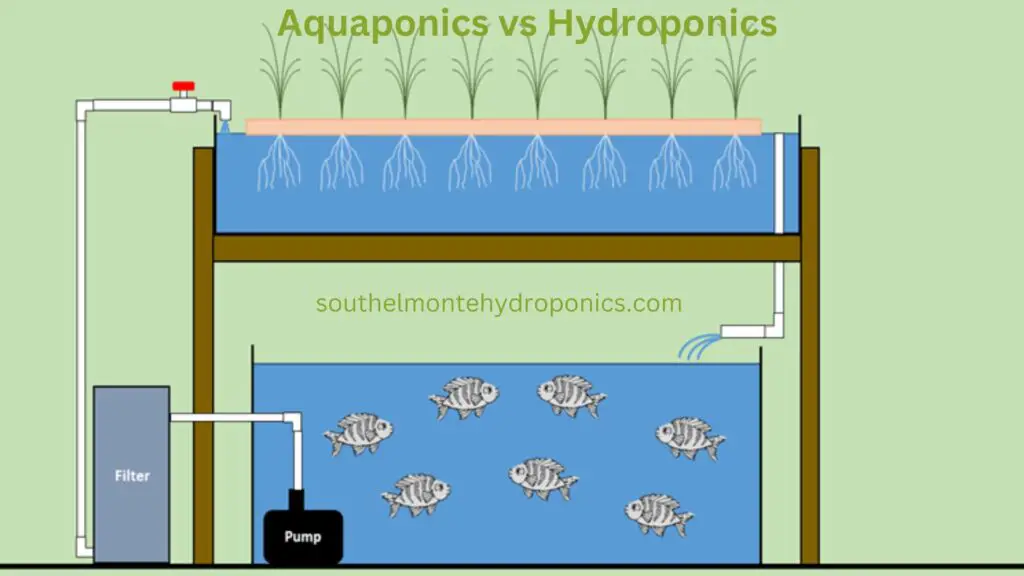
Maintenance and labor play a critical role in the success of both aquaponics and hydroponics systems. While both systems offer the advantage of reduced manual labor compared to traditional soil-based gardening, there are still important considerations to be made.
In aquaponics, maintaining the health and well-being of both plants and fish requires specialized knowledge and expertise. Regular monitoring of water quality, including pH levels, ammonia and nitrate concentrations, and oxygen levels, is essential. Additionally, a keen understanding of fish management is necessary, including feeding schedules, monitoring for diseases, and ensuring optimal conditions for growth. Proper care and maintenance of the filtration system, including regular cleaning and replacement of parts, is also crucial for the system’s overall functionality.
Similarly, in hydroponics, there are specific maintenance tasks that need to be regularly performed to ensure optimal plant growth. Monitoring and adjusting nutrient solutions, maintaining proper pH levels, and preventing nutrient imbalances are key responsibilities. Additionally, regular system checks, such as inspecting and cleaning pumps, ensuring efficient water circulation, and preventing clogging in the irrigation lines, are essential for sustained productivity. Knowledge of plant anatomy, nutrient requirements, and common pests and diseases is vital for successful management.
While both aquaponics and hydroponics require a certain level of effort and expertise, the specific tasks and focus of maintenance may differ. Aquaponics demands expertise in fish care and water quality management, while hydroponics requires a strong understanding of plant nutrition and system functionality. Ultimately, the level of effort and expertise required will vary depending on the scale and complexity of the system, as well as the individual grower’s knowledge and experience. Despite the additional considerations, the reduced reliance on conventional farming methods and simplified gardening practices make both aquaponics and hydroponics appealing options for those willing to invest the necessary time and effort.
Learning Curve: Evaluating the Skills and Knowledge Needed for Success Aquaponics vs Hydroponics
Aquaponics and hydroponics are unique agricultural methods that require a certain level of skills and knowledge for success. While both systems involve growing plants without soil, there are slight differences in terms of the learning curve associated with each.
In aquaponics, understanding the symbiotic relationship between fish and plants is crucial. Gardeners must learn how to maintain proper water quality for the fish, as well as the appropriate balance of nutrients for the plants. This requires knowledge in water chemistry, fish health, and plant biology. Additionally, learning how to manage the entire aquaponics system, including the filtration system and the cycling of nutrients, is essential for achieving optimal results.
On the other hand, hydroponics focuses solely on plant growth and nutrient delivery. Gardeners need to have a solid grasp of nutrient management, understanding the correct ratios and concentrations for different types of plants. They also need to consider factors such as pH balance, water quality, and the prevention of nutrient deficiencies or toxicities. Alongside these technical aspects, hydroponic gardeners should also be knowledgeable about plant growth and development, pest control, and the proper use of equipment such as pumps and timers.
With both aquaponics and hydroponics, the learning curve can be steep, especially for beginners. However, there are numerous resources available, including online tutorials, workshops, and forums, where gardeners can acquire the necessary skills and knowledge. By investing time and effort into learning and experimenting, gardening enthusiasts can quickly become successful practitioners of these innovative agricultural methods.
Integration with Fish Farming: Understanding the Unique Benefits and Challenges of Aquaponics vs Hydroponics
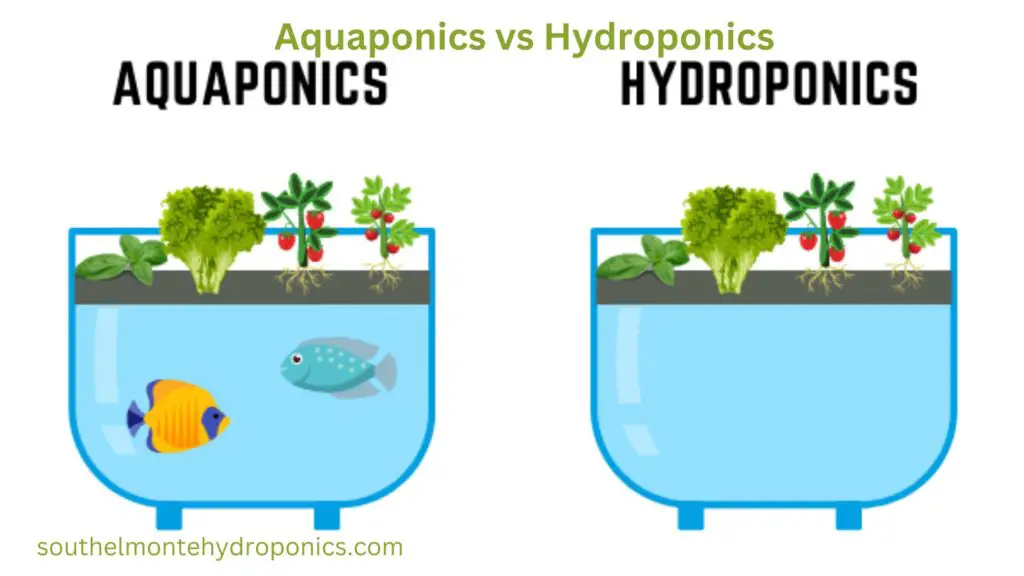
Aquaponics, a combination of aquaculture and hydroponics, offers a unique and efficient way to integrate fish farming with plant cultivation. This innovative system brings together the benefits of both practices, creating a mutually beneficial environment where fish waste provides essential nutrients for plant growth, while the plants filter and purify the water to create a healthy habitat for the fish. The result is a sustainable and self-sufficient ecosystem that can produce both nutritious fish and a variety of high-quality crops.
One of the key benefits of aquaponics is the reduction in water usage compared to traditional fish farming methods. By recirculating and reusing water, aquaponics uses significantly less water than conventional aquaculture systems. According to research, aquaponics requires only 10% of the water used in soil-based agriculture for the same crop yield. This efficient use of water not only helps conserve scarce resources but also minimizes the environmental impact of fish farming. Additionally, the controlled environment of aquaponics allows for year-round production, eliminating the seasonal variability associated with traditional farming practices.
However, integrating fish farming into aquaponics also presents unique challenges. The health and well-being of the fish are crucial for the system’s success, requiring careful monitoring and management of water quality, oxygen levels, and temperature. Any fluctuations or imbalances in these parameters can have detrimental effects on both the fish and the plants. Additionally, disease control becomes critical in a closed system like aquaponics, as any outbreak can spread rapidly and affect the entire ecosystem. Therefore, regular monitoring, preventative measures, and quick responses are essential to maintaining a healthy and productive system.
In the next section, we will explore real-life examples of successful implementations of aquaponics and hydroponics systems, providing further insight into the practicalities and benefits of integrating fish farming with plant cultivation.
Below is a comparison table outlining the key differences between aquaponics vs hydroponics:
| Aspect | Aquaponics | Hydroponics |
|---|---|---|
| Nutrient Source | Combines aquaculture (fish farming) and hydroponics. Fish waste provides nutrients for plants. | Utilizes a nutrient solution (mineral nutrient mix) for plant growth. Nutrients are manually added and monitored. |
| Nutrient Recycling | Nutrients are recycled in a closed-loop system. Fish waste is converted by bacteria into forms usable by plants. | Nutrient solution is typically recirculated, reducing waste. Some systems may require periodic replenishment of nutrients. |
| Fish Farming | Involves raising fish alongside plant cultivation. Fish provide ammonia-rich waste, promoting nutrient cycling. | Excludes fish farming. Plants receive nutrients directly from the solution, and there is no interaction with aquatic life. |
| pH Control | Fish waste can influence pH. Regular monitoring and adjustments are necessary to maintain optimal conditions for both fish and plants. | pH levels are controlled independently based on the specific needs of the plants being cultivated. |
| Complexity | Generally more complex due to the integration of both aquaculture and hydroponics components. Requires understanding of fish care and system balance. | Simpler in design, as it focuses solely on plant cultivation and nutrient management. |
| Fish Health | Aquaponics systems require attention to both plant and fish health. Fish health impacts nutrient availability for plants. | No direct impact on fish health, as hydroponics does not involve raising aquatic life. |
| System Stability | May experience instability if there are issues with fish health, leading to fluctuations in nutrient levels. Requires balance between fish and plant needs. | Generally more stable, as nutrient levels are directly controlled. Any imbalances are typically easier to address. |
| Start-up Costs | Initial costs can be higher due to the need for fish tanks, pumps, and aeration systems. Ongoing costs include fish feed. | Generally lower start-up costs, as it doesn’t involve the complexities of fish farming. Ongoing costs may include nutrient solutions. |
| Crop Variety | Suitable for a wide range of crops, including leafy greens, herbs, and some fruiting plants. Fish selection may influence plant choices. | Adaptable to various crops, offering flexibility in plant selection based on the grower’s preferences and market demand. |
| Environmental Impact | Generally considered more sustainable, as it mimics natural ecosystems and utilizes fish waste. Requires less external input for nutrient supplementation. | Requires external nutrient inputs, and nutrient runoff may impact the environment if not managed properly. |
This table provides a comparative overview of aquaponics and hydroponics, highlighting their differences in terms of nutrient sources, complexity, environmental impact, and other key factors.
Real-Life Examples: Showcasing Successful Implementations of Aquaponics Vs Hydroponics Systems
Aquaponics and hydroponics have gained significant attention in recent years due to their potential for sustainable and resource-efficient food production. Real-life examples of successful implementations can provide valuable insights for gardening enthusiasts and aspiring aquaponics or hydroponics practitioners.
One notable example is the Growing Power urban farm in Milwaukee, Wisconsin. This farm combines aquaponics and hydroponics systems to cultivate a wide variety of crops, ranging from lettuce and herbs to tomatoes and peppers. The farm’s aquaponics setup utilizes nutrient-rich water from fish tanks, which is pumped through growing beds where plants extract the necessary nutrients. The filtered water is then returned to the fish tanks, creating a symbiotic relationship between plants and fish.
Another successful implementation can be found at the Green Sense Farms in Portage, Indiana. This indoor vertical farming facility uses hydroponics to grow leafy greens and herbs year-round. With a focus on sustainability, the farm employs advanced LED lighting systems, precise nutrient management, and automated control systems to optimize plant growth and resource efficiency. The result is a highly productive and environmentally friendly farm that minimizes water consumption and reduces the need for pesticides and herbicides.
These real-life examples demonstrate the potential of aquaponics and hydroponics in meeting the challenges of modern agriculture. By harnessing technology and adopting innovative cultivation methods, these systems offer a promising solution for sustainable, high-yield food production. Gardening enthusiasts can draw inspiration from these successful implementations and explore the possibilities of aquaponics and hydroponics in their own ventures.
What is the main difference between aquaponics Vs hydroponics?
Aquaponics combines aquaculture (raising fish) with hydroponics (cultivating plants in water), creating a symbiotic relationship where the waste produced by the fish provides nutrients for the plants, and the plants purify the water for the fish. Hydroponics, on the other hand, is a method of growing plants in a soilless medium, where the plants receive nutrients directly from a nutrient solution.
How do aquaponics and hydroponics systems impact the environment?
Both aquaponics and hydroponics systems have positive environmental impacts. Aquaponics eliminates the need for synthetic fertilizers and minimizes water usage by recycling and reusing it within the system. Hydroponics also reduces water consumption compared to traditional soil cultivation, as the nutrient solution can be recirculated. Additionally, both systems require less space and can be implemented in urban areas, reducing the need for transportation and minimizing carbon emissions.
Which system, aquaponics or Aquaponics vs Hydroponics, requires more fertilizer usage?
Hydroponics typically requires more fertilizer usage compared to aquaponics. In hydroponics, the nutrient solution needs to provide all the necessary nutrients for plant growth. In aquaponics, the fish waste provides a natural source of nutrients for the plants, reducing the need for additional fertilizers.
How does water consumption compare between aquaponics and hydroponics systems?
Aquaponics systems generally use less water compared to hydroponics systems. This is because in aquaponics, water is continuously recycled and reused within the system, while in hydroponics, water is typically recirculated but can still evaporate and require occasional replenishment.
Which system, Aquaponics vs Hydroponics, is more effective in controlling pests and diseases?
Both aquaponics and hydroponics systems can effectively control pests and diseases. However, aquaponics systems, with the presence of fish, can provide additional biological control, as the fish can eat pests and help maintain a balanced ecosystem. Hydroponics systems may rely more on implementing integrated pest management techniques, such as using beneficial insects or organic pest control methods.
Which system, aquaponics or hydroponics, is known for better plant growth and higher crop yields?
Both aquaponics and hydroponics systems can produce impressive plant growth and high crop yields. However, aquaponics systems often excel in this aspect due to the nutrient-rich water provided by the fish waste, creating optimal conditions for plant growth. Hydroponics systems, with precise control over nutrient levels and environmental factors, can also achieve excellent plant growth and high yields.
Are there significant cost differences between aquaponics and hydroponics systems?
Generally, hydroponics systems have lower startup costs compared to aquaponics systems. Hydroponics systems typically require fewer components and equipment, making them more budget-friendly in terms of initial investment. However, the long-term operational costs for aquaponics systems can be lower due to the reduced need for fertilizers. It is important to conduct a thorough cost analysis considering factors such as system size, location, and scale.
Can aquaponics and hydroponics systems be scaled for different settings?
Both aquaponics and hydroponics systems are scalable and can be adapted to different settings. Hydroponics systems are highly versatile and can be implemented in various environments, including indoor and outdoor spaces. Aquaponics systems can also be scaled, but consideration should be given to the availability and management of fish tanks, filtration systems, and the overall balance of the ecosystem.
How much effort and expertise are required for maintaining aquaponics and hydroponics systems?
Both aquaponics and hydroponics systems require a moderate level of effort and expertise for maintenance. Regular monitoring of water quality, nutrient levels, and pH is essential to ensure optimal plant growth and fish health. Additionally, routine tasks such as feeding the fish, pruning the plants, and maintaining equipment are necessary. However, with proper training and experience, individuals can successfully maintain and operate these systems.
Do aquaponics and hydroponics systems require specific skills and knowledge for success?
Yes, both aquaponics and hydroponics systems require a certain level of skills and knowledge for success. Understanding plant nutrition, water quality parameters, and the interaction between fish and plants is crucial. Additionally, knowledge of pest and disease management, system troubleshooting, and basic plumbing and electrical skills may be beneficial. However, resources, courses, and training programs are available to help individuals acquire the necessary skills and knowledge.
What are the unique benefits and challenges of integrating fish farming into aquaponics systems?
Integrating fish farming into aquaponics systems offers several unique benefits. The fish waste provides a natural source of nutrients for the plants, reducing the need for external fertilizers. Additionally, the fish can be harvested for consumption, providing an additional source of income or food. However, challenges include maintaining water quality for the fish, maintaining a balanced ecosystem, and selecting fish species that are compatible with the plants and system conditions.

